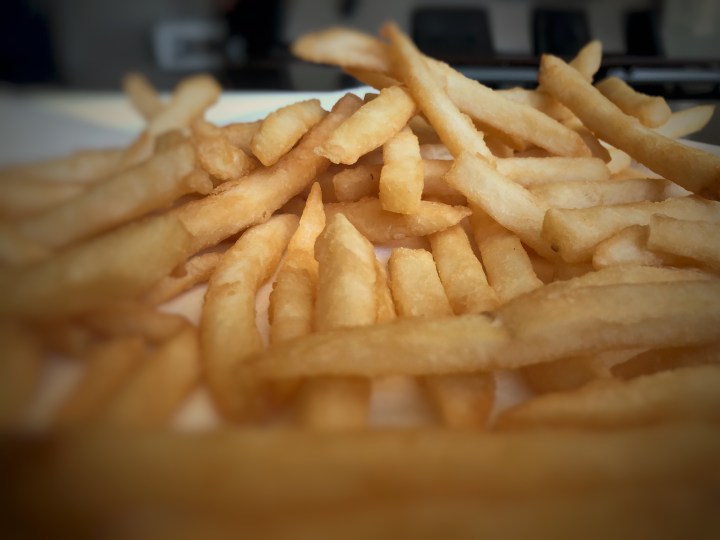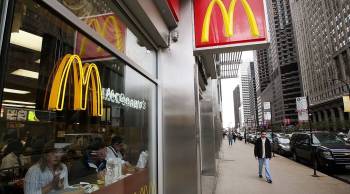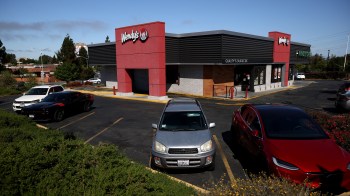
The quest for french fries crisp enough to withstand delivery
The quest for french fries crisp enough to withstand delivery

Home-delivered fast food is a booming global business, but when it comes to french fries, there’s a hitch. They often get soggy on the ride.
Now, top fry makers are racing to perfect a crispy fry that can survive a 15-minute ride with a food delivery service.
Crystal Begallia, an Uber Eats driver, said she sometimes stresses over delivering cold and limp fries to customers.
“I get kind of worried,” Begallia said. “Especially if I pick up food from one of the bigger restaurants and they are spending quite a bit of money. Hopefully it’s still hot when I get to you.”
One reason fries can lose their crunch is because they’re often delivered in closed containers.
“You’re sealing them in like a sauna,” said Deb Dihel, head of innovation for the large potato processing firm Lamb Weston. “And they just get soggy really quickly. It’s like the worst case scenario for a french fry.”
Lamb Weston is based in Eagle, Idaho — that state famous for its potatoes — but has major processing plants and an innovation center in Washington’s Tri-Cities area.
Dihel first saw what happened to delivery fries five years ago in China. Restaurants there were putting hot fries into large clamshell containers and then into closed boxes for delivery.
“I was like no, no, no! Don’t do that!” she said. “At least leave it open, like, at least let the steam vent and not make the product soggy.”
Dihel said that once out of the oil, most fries can only stay crisp for 12 minutes. So, when she came back to the U.S., she set about trying to fix the problem. The first part of the solution was changing how fries are made.
Dihel and her team of food scientists developed a special starchy batter to help fries stay crisp. Its exact ingredients are a trade secret, but it features potato starch and rice flour. She opened a bag of frozen fries, put them in a wire basket and lowered them into hot bubbly oil in Lamb Weston’s Richland test kitchen. When the fries came out, they had a lot of crunch.
They were still crunchy 30 minutes later, even at room temperature.
Fast food’s evolution
The other part of keeping fries crunchy on a ride is packaging.

Lamb Weston developed a special container perforated with holes that’s supposed to let steam escape without letting the fries go cold. It’s a design that big restaurant customers and other packaging brands can use.
Innovating to meet the needs of busy consumers has always been part of fast food’s evolution, says Adam Chandler, author of “Drive-Thru Dreams: A Journey Through the Heart of America’s Fast-Food Kingdom.” He’s not surprised that big potato is working to slay the soggy.
“Fast food really doesn’t seem to be the kind of food you’d like to eat when it’s older than five minutes,” Chandler said, adding that home delivery is “how people are eating now, so the market is going to respond to that problem.”
Reimagining potatoes
Because delivery is such a fast-growing segment of the total market, fry makers and restaurants are trying to figure this out, according to Blair Richardson, chief executive of Potatoes USA, a marketing and research organization.

“We are reimagining how we can bring potatoes to consumers today, and we never stop doing that,” Richardson said. “If an industry stops doing that, then they’re going to become irrelevant very quickly.”
In that spirit, and to keep from becoming irrelevant, Dihel and her team are already thinking about ways to deliver fries using self-driving cars with robots and air fryers.
There’s a lot happening in the world. Through it all, Marketplace is here for you.
You rely on Marketplace to break down the world’s events and tell you how it affects you in a fact-based, approachable way. We rely on your financial support to keep making that possible.
Your donation today powers the independent journalism that you rely on. For just $5/month, you can help sustain Marketplace so we can keep reporting on the things that matter to you.


















